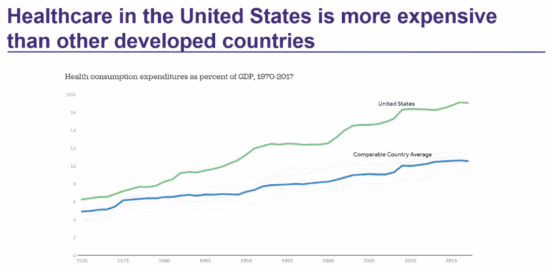The United States spends a huge amount on healthcare, more than any other country both in total and per capita. However, all of that money doesn’t buy better outcomes than other developed nations. So where does the money go? You won’t be surprised to know that there’s been a lot of research into exactly that.
In a seminal paper in JAMA in 2018, Papanicolas et al examined the differences between the US and other advanced economies in terms of their overall healthcare expenditures and the associated outcomes. They found that back in 2016, the US spent almost twice as much on medical care as ten high-income countries, despite a poorer performance when it came to population health. Social spending and healthcare usage didn’t differ substantially between the United States and other high-income nations. The main drivers of the spending differences appeared to be the prices of labor and goods (including pharmaceuticals and devices) and administrative costs.

The administrative costs of healthcare (which are due to planning, regulating and managing health systems) are the cause of 8% of all healthcare costs in the US, as opposed to between 1 and 3% in other countries. This is different by a magnitude of 3-8, and a big reason for the US having much higher overall costs of care. We’ve already talked about some of the reasons for this, but the main one is the large number of insurance companies with their own benefit plan requirements (more than 1,000 of them!) forms and filing requirements.

It doesn’t look like the number of insurance companies in the US will shrink any time soon, and our public-private healthcare system is unlikely to become a single payer system. So how can we lower administrative costs?






